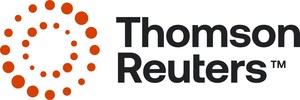Thomson Reuters Establishes Best Practices for Statewide Health Information Exchanges: Whitepaper Outlines Steps to Maximize Stimulus Funding
ANN ARBOR, Mich., March 29 /PRNewswire/ -- With approximately $400 million in federal stimulus dollars being funneled into local governments to develop statewide health information technology programs, states are rapidly developing Health Information Exchanges (HIE) to streamline information sharing and the continuity of patient care.
Despite widespread support for HIEs as a means of sharing electronic patient information across providers, few state governments agree on the best approach to implementing them. After examining current HIE proposals, historical precedents and case studies of successful prototype programs, Thomson Reuters has outlined ten best practices for implementing statewide HIEs.
The results of the Thomson Reuters analysis are published in a whitepaper released today, "Statewide Health Information Exchange: Best Practice Insights from the Field." The whitepaper can be downloaded here (simple registration required): http://interest.healthcare.thomsonreuters.com/content/HIEWhitepaper
Among the ten best practices for building a statewide HIE, Thomson Reuters recommends the following:
- Obsess About Tactics, Not Strategy: The real purpose of HIE planning should be to define a meaningful pilot that meets the needs of local stakeholders.
- Plan for Mistakes – Ensure They Are Small and Cheap: It is more expedient to get a small program up and running and learn from mistakes, rather than set goals that are too ambitious from the onset.
- Avoid the Conference Room Design Trap: It is critical to involve physicians and clinicians at the outset to determine what will be most beneficial on the frontlines where patients are served.
- Take Baby Steps – Go Live with Something: It is important to avoid the trap of tweaking the grand design toward perfection at the expense of launching something manageable.
- Avoid the Empty HIE Syndrome: The HIE is a means to an end; it needs to provide physicians with as many different types of information from as many different sources as possible.
- Focus on Clinical Use First: While an HIE serves many purposes, addressing the clinical use case is the most direct path to demonstrating the value of the HIE.
- Say No to an Opt-in Consent Policy: While it is vital to protect patient privacy in the HIE, opt-in environments have been shown to impede patient participation. An opt-out environment, by contrast, preserves the rights of the patient without hindering adoption.
- Caregivers Cannot Drink from a Fire Hose: It is very easy to provide too much information in the data-rich HIE environment; the ideal programs have embedded analytic capabilities that deliver an intelligence presentation of information.
- Build Analytics Into the System at Start-Up: Systems designed to simply deliver content do not scale well to perform functions that require analysis; it is important that these systems are undergirded with analytics technology.
- Don't Become the State Electronic Records Provider – Focus on Exchange: It can be counterproductive for the state to position itself as resident education and electronic records provider; it is important to focus on the goal of providing the infrastructure to deliver the information as efficiently as possible.
"Every state in the country will get significant funds to create an exchange that essentially works like an interstate highway connecting the entire state," said Matthew Bates, MPH, senior vice president in the Healthcare & Science business of Thomson Reuters and co-author of the paper. "State governments need to create the 'interstate' and then – like neighborhoods, towns and cities along the interstate highway – the hospitals, pharmacies, labs and physicians offices can build on-ramps to connect to the exchange."
About Thomson Reuters
Thomson Reuters is the world's leading source of intelligent information for businesses and professionals. We combine industry expertise with innovative technology to deliver critical information to leading decision makers in the financial, legal, tax and accounting, healthcare and science and media markets, powered by the world's most trusted news organization. With headquarters in New York and major operations in London and Eagan, Minnesota, Thomson Reuters employs more than 50,000 people and operates in over 100 countries. Thomson Reuters shares are listed on the Toronto Stock Exchange (TSX: TRI) and New York Stock Exchange (NYSE: TRI). For more information, go to www.thomsonreuters.com.
SOURCE Thomson Reuters
WANT YOUR COMPANY'S NEWS FEATURED ON PRNEWSWIRE.COM?
Newsrooms &
Influencers
Digital Media
Outlets
Journalists
Opted In




Share this article